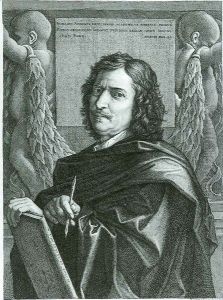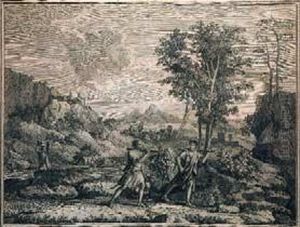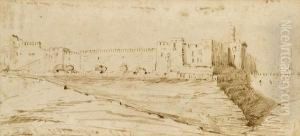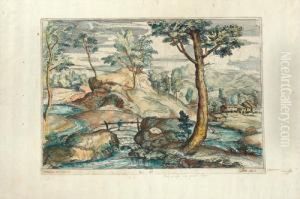Jean Pesne Paintings
Jean Pesne was a prominent French engraver and draughtsman born in 1623 in Paris, France. His career spanned the latter part of the 17th century, a time when the arts flourished under the patronage of the French monarchy, particularly during the reign of Louis XIV. Pesne was known for his exceptional skills in engraving, which allowed him to reproduce works by some of the most renowned artists of his time, including Nicolas Poussin and Raphael. His ability to capture the essence and detail of these masterpieces contributed significantly to the dissemination of their styles and compositions throughout Europe.
Pesne's education and training in the arts began at a young age, under the guidance of renowned artists and engravers of his era. He quickly distinguished himself with his meticulous attention to detail and his mastery of engraving techniques. Throughout his career, Pesne worked on a variety of projects, from portraits and historical scenes to religious and mythological subjects. His reproductions were highly sought after by collectors and art enthusiasts, who admired his skill in translating the grandeur and complexity of paintings into the more accessible medium of prints.
In addition to his reproductions, Jean Pesne also contributed to the art world through his original works. Though he is primarily remembered for his engravings, his original compositions exhibit a keen understanding of anatomy, perspective, and shading, reflecting the influence of the classical and baroque styles predominant in his time. Pesne's work was not only a testament to his individual talent but also served as a bridge between the great artists of the past and the art collectors and appreciators of his day.
Pesne's legacy extends beyond his contributions to engraving. He played a crucial role in the art community of Paris, participating in the intellectual and artistic circles that helped define the French art scene of the late 17th century. His works are preserved in numerous museums and collections around the world, serving as valuable resources for understanding the evolution of engraving techniques and the history of European art.
Jean Pesne passed away in 1700, leaving behind a body of work that continues to be celebrated for its precision, beauty, and historical significance. His engravings remain a testament to the enduring appeal of classical art and the skill of those, like Pesne, who devoted their lives to its preservation and propagation.



